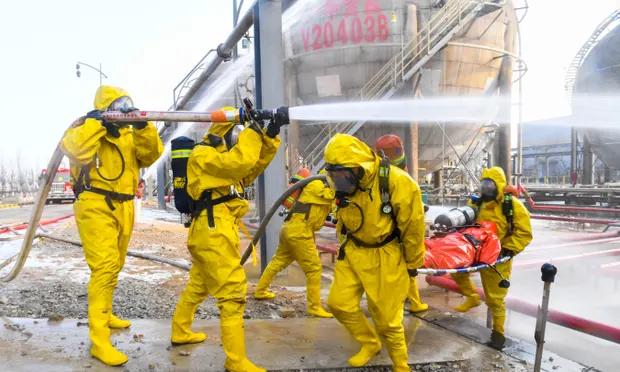Plastics are of particularly high concern, they said, along with 350,000 synthetic chemicals including pesticides, industrial compounds and antibiotics. Plastic pollution is now found from the summit of Mount Everest to the deepest oceans, and some toxic chemicals, such as PCBs, are long-lasting and widespread.
The study concludes that chemical pollution has crossed a “planetary boundary”, the point at which human-made changes to the Earth push it outside the stable environment of the last 10,000 years.
Chemical pollution threatens Earth’s systems by damaging the biological and physical processes that underpin all life. For example, pesticides wipe out many non-target insects, which are fundamental to all ecosystems and, therefore, to the provision of clean air, water and food.
“There has been a fiftyfold increase in the production of chemicals since 1950 and this is projected to triple again by 2050,” said Patricia Villarrubia-Gómez, a PhD candidate and research assistant at the Stockholm Resilience Centre (SRC) who was part of the study team. “The pace that societies are producing and releasing new chemicals into the environment is not consistent with staying within a safe operating space for humanity.”
Dr Sarah Cornell, an associate professor and principal researcher at SRC, said: “For a long time, people have known that chemical pollution is a bad thing. But they haven’t been thinking about it at the global level. This work brings chemical pollution, especially plastics, into the story of how people are changing the planet.”
Some threats have been tackled to a larger extent, the scientists said, such as the CFC chemicals that destroy the ozone layer and its protection from damaging ultraviolet rays.
Determining whether chemical pollution has crossed a planetary boundary is complex because there is no pre-human baseline, unlike with the climate crisis and the pre-industrial level of CO2 in the atmosphere. There are also a huge number of chemical compounds registered for use – about 350,000 – and only a tiny fraction of these have been assessed for safety.
So the research used a combination of measurements to assess the situation. These included the rate of production of chemicals, which is rising rapidly, and their release into the environment, which is happening much faster than the ability of authorities to track or investigate the impacts.
The well-known negative effects of some chemicals, from the extraction of fossil fuels to produce them to their leaking into the environment, were also part of the assessment. The scientists acknowledged the data was limited in many areas, but said the weight of evidence pointed to a breach of the planetary boundary.
“There’s evidence that things are pointing in the wrong direction every step of the way,” said Prof Bethanie Carney Almroth at the University of Gothenburg who was part of the team. “For example, the total mass of plastics now exceeds the total mass of all living mammals. That to me is a pretty clear indication that we’ve crossed a boundary. We’re in trouble, but there are things we can do to reverse some of this.”
Villarrubia-Gómez said: “Shifting to a circular economy is really important. That means changing materials and products so they can be reused, not wasted.”
The researchers said stronger regulation was needed and in the future a fixed cap on chemical production and release, in the same way carbon targets aim to end greenhouse gas emissions. Their study was published in the journal Environmental Science & Technology
There are growing calls for international action on chemicals and plastics, including the establishment of a global scientific body for chemical pollution akin to the Intergovernmental Panel on Climate Change.
Prof Sir Ian Boyd at the University of St Andrews, who was not part of the study, said: “The rise of the chemical burden in the environment is diffuse and insidious. Even if the toxic effects of individual chemicals can be hard to detect, this does not mean that the aggregate effect is likely to be insignificant.
“Regulation is not designed to detect or understand these effects. We are relatively blind to what is going on as a result. In this situation, where we have a low level of scientific certainty about effects, there is a need for a much more precautionary approach to new chemicals and to the amount being emitted to the environment.”
Boyd, a former UK government chief scientific adviser, warned in 2017 that assumption by regulators around the world that it was safe to use pesticides at industrial scales across landscapes was false.
The chemical pollution planetary boundary is the fifth of nine that scientists say have been crossed, with the others being global heating, the destruction of wild habitats, loss of biodiversity and excessive nitrogen and phosphorus pollution.
_____________________________________________
 Damian Carrington is the Guardian’s Environment editor.
Damian Carrington is the Guardian’s Environment editor.
